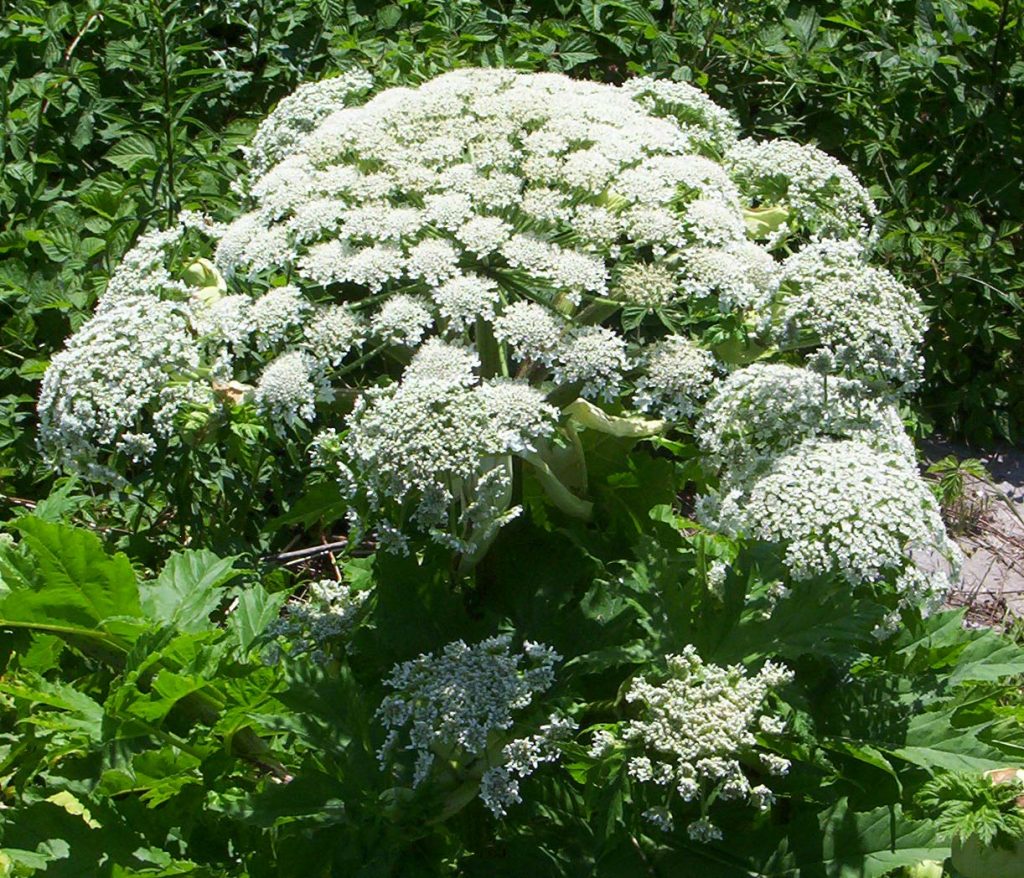
A horrifying invasive plant is creeping across the United States, and you’ll want to keep your distance.
Growing up to 14 feet tall with umbrella-shaped clusters of white flowers spanning up to 2.5 feet across, giant hogweed (yes, that’s really the name) is known for its striking appearance. That, and the fact that it leaves painful blisters all over your skin and can even make you blind.
The plant is an invasive species from Asia that was likely introduced to the United States as a garden plant. With the ability to produce up to 50,000 seeds from a single plant and no native pests in the U.S., giant hogweed can quickly take over a field. The dreadful plant grows mainly in the northeast, but its range has now extended as far south as Virginia, and as far west as Oregon.
Harmful effects of Giant hogweed
So, how exactly does it burn you? Sap released from the plant contains chemicals called furanocoumarins, which can cause phytophotodermatitis, a condition that makes your skin extremely sensitive to sunlight. We’re talking vampire-level sensitivity, here. Combined with heat and sweat, you can easily end up with the worst sunburn of your entire life, with painful pigmented blisters that last for months.

The reaction begins as soon as 15 minutes after contact and can take months to completely heal. Some scars can even last more than 5 years. Even after the initial burns heal, you have to avoid exposing that area to sunlight for up to 7 years. Yikes.
Pls RT this to warn other #dog owners about the dangers of Giant Hogweed burn. This is what it did to my dog Ellie! pic.twitter.com/aNA5uVLxw8
— Joanne Boardman FRSA (@JoBoardman) June 22, 2015
Oh, and you’ll also want to avoid getting the toxic sap into your eyes — it can make you go blind.
Your best bet is to never, ever touch this plant with your bare skin; every part of the plant contains sap. If you are exposed, wash the area immediately with cold water and stay out of the sun for at least 48 hours. If you do have a reaction, applying over the counter topical steroids to the affected area may help ease the discomfort.




